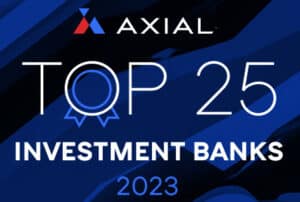
It’s always true that the owners of a tire-related business know everything about their particular business, while the parties looking to buy it know very little.
Whether you are a tire retailer, a commercial tire dealer or a wholesaler, it helps to treat potential buyers as if they were your customers.
And in this case, they are customers for your business. Stepping into their shoes and trying to understand how they view the risks in acquiring your business will help you achieve a successful outcome.
This can be an adjustment for some. Many owners have built their companies from the ground up and have grown completely comfortable over time with whatever business risks their enterprises face. It is only when a credible buyer raises concerns that certain risks need to be assessed for their probability of occurring and the economic impact that might entail.
My general recommendation when assisting any tire dealer who wants to exit their business is to just be transparent. Presenting the challenges and deficits in your business is just as important as presenting what you excel at. This transparency enhances a buyer‘s trust in you and allows them to start formulating their post-acquisition business plans. I believe It helps lower their perceived risk in any deal.
Just in the last year, we’ve been involved in M&A deals where these following risks have been causes for concerns among buyers:
- Customer concentration. If more than 20% of your business can be traced to one customer, that may be too much revenue and profit risk for some buyers – regardless of how long you’ve had the relationship or how important you are to that customer. It becomes an easy reason for private equity buyers to give a quick “no” on some opportunities.
- Recent profit run-up (also known as the “COVID-19 bump.”) With consumers flush with government cash, many chose to spend it on their cars. While certain clients of ours are certainly picking up market share, buyers are looking to the coming year and questioning whether they face risk that growth will falter under their ownership.
- Poor financial transparency. Your performance may be great, but if the accounting behind it is questionable, no one will believe it. Sophisticated investors like to drill down into your numbers and having no detail or not following generally accepted accounting principles (GAAP) only makes them nervous that they could be buying a “pig in a poke.”
Those are three big ones, but there are many other risks that can come up in tire dealership M&A transactions. When they arise, there are only four ways a buyer deals with risk. They can accept it, avoid it, transfer it or mitigate it.
In one recent transaction, a client was concerned that some locations in their 40-year-old tire business were not Amercians with Disabilities Act (ADA)-compliant. They proactively engaged an ADA consultant and repaired and adjusted everything within reason to mitigate future non-compliance impacts to the buyer. In cases where the cost was so ridiculous that it did not make any sense, our client explained the issues to the buyers, who then chose to accept the risk that any other future costs would likely be minimal.
In another case, the owner of a distribution business has a month-to-month lease on the warehouse he’s been operating out of for 20 years. Only when he speaks with the landlord and helps his company’s buyer get a long-term lease, will the risk that buyer could lose the lease and move – thus incurring costs – be mitigated.
In a third case, the ownership records in an old C-corporation could have been better organized for our stock transaction, so we secured representations and warranties insurance. This is a relatively new form of insurance and it is increasingly being used in smaller transactions. It indemnifies the buyer from loss as a result of breaches of representations and warranties after a transaction and minimizes the amount of funds a seller might need to tie up in an escrow. In this deal, the buyer and seller split the representations and warranties insurance to transfer the risk to a third party, which was an insurance company.
There are certain procedures in an M&A transaction process that are designed to identify, quantify and then deal with risk. One of them is the due diligence process.
Due diligence is intended to validate the business opportunity as represented by the seller, as well as uncover risks to buyers. It’s a comprehensive review of your financial performance, business performance, legal issues, human resource policies, locations, environmental compliance, tax records and more. It’s a lot of work gathering, reviewing and explaining all of that information to buyers, but it has to be done.
Remember, you know everything about your business. They don’t. Sellers hate due diligence and it is never fun. I liken it to an invasive medical exam. You’re never quite ready for it and it seems to go on forever.
As part of due diligence, buyers typically get a third-party quality of earnings (QOE) report from independent financial consultants or accounting firms. A QOE report assesses past financial performance, as well as the “quality” or likelihood that it will continue. This helps buyers mitigate the risk that they are looking at things through rose-colored glasses and it fulfills their fiduciary duty of care to stakeholders and investors.
Increasingly, to move a deal along faster and help maximize value, we are encouraging clients in larger transactions to invest the $40,000 or more that it costs to get a “seller’s QOE” report. This helps the seller identify all of the relevant add-backs and adjustments to EBITDA so they can maximize value. It also helps them obtain a quality check on their compliance with GAAP and allows them to adjust accounting policies, while lending credibility to their representations of profitability, accelerating the process by gathering all of the relevant information for buyers to review, helping establish a working capital target and presenting financials in the “trailing 12-month” period, which is most important to both parties.
Seller’s QOE reports are ways for sellers to validate for themselves their own profitability so that when they do get an acceptable offer from a credible buyer, they feel more confident that a transaction will go through and that they won’t face pricing discount pressure based on their numbers not holding up in the buyer’s QOE.
As investment bankers, we don’t want to get involved in bad deals and life is too short to spend it inside a courtroom. I find that transparency is always the best policy when doing an M&A transaction.
Don’t hide the bad stuff. In fact, bring it to light. By doing so, the other party can assess your risks and better understand how they can make your problem less of a liability and more of an opportunity.













